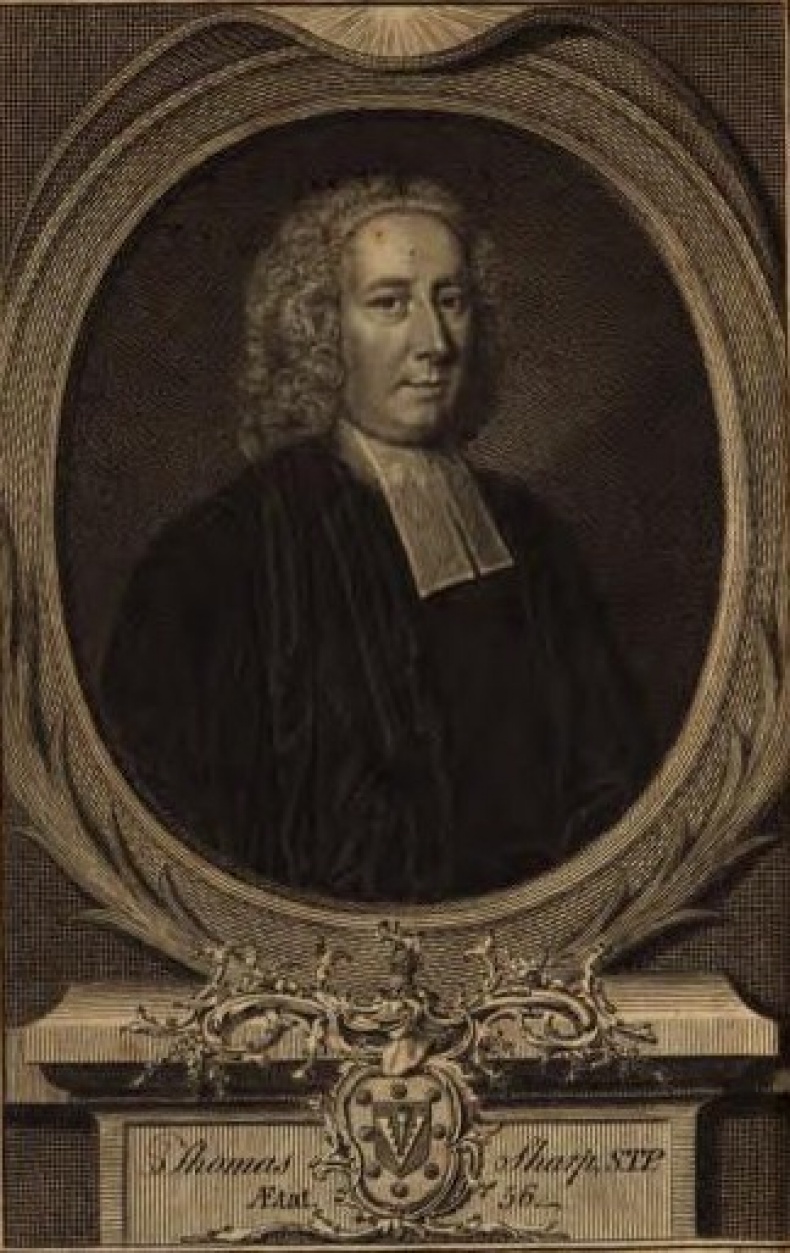

Sharp, Thomas
1693-1758
Archdeacon of Northumberland
Thomas Sharp was the second son of John Sharp (1645-1714), Archbishop of York. He was educated at Trinity College Cambridge, receiving an MA in 1716, after which he was ordained a deacon.
In 1723 he became archdeacon of Northumberland. He became a Prebendary (a beneficiary of a substantial endowment) of Durham Cathedral in 1732. In 1755 he became official to the Dean and Chapter of Durham Cathedral. Sharp married, on 19 June 1722, Judith, daughter of Sir George Wheler, with whom he had 14 children.
In 1736 he became a trustee of the Lord Crewe’s Charity “whose charities he was indefatigable in promoting” (Oxford Dictionary of National Biography Vol. 51, P. 416). Sharp was concerned with ensuring the moral and religious education of the population. He helped to establish a public library in Bamburgh village in the vestry of St Aidan’s church. In the 1720’s the masons of his parish in Whitton and Tosson were unable to find employment as a result of a long and hard winter. He had them build a 30-foot high ashlar structure, which he later used for astronomy. The tower, or “Sharp’s Folly” as it is known, is the oldest folly in Northumberland. He also personally built up a large library, which passed to his son, Dr John Sharp (1722 – 1792). The collection didn’t just contain works on theology, it also contained titles on natural philosophy, travel and literature.
As Chairman of the trustees of the Lord Crewe Charity, Sharp was personally involved in the improvement of Blanchland. Many of his improvement benefit its residents to this day. When the agent who was responsible for the competent oversight of Blanchland went bankrupt, it resulted in a loss to the trustees. During a 3 day visit to he supplied the financing for the rebuilding of the "decayed tenements in the Abbey", by which he means the present square, and a bridge to be constructed over the Derwent.
Sharp passed away in 1758 and was buried in the west end of Durham Cathedral in the Galilee Chapel. His son John (1722 – 1792) became a trustee on his father’s death.
References
Dictionary of National Biography. Sharp, Thomas. (1897). Volume 51, pp. 416.
History of Bamburgh. Available here (Accessed: 09/08/18).
Hodgson J. (1827). History of Northumberland, Part II Vol I, Newcastle: T & J Pigg.
Lord Crewe’s Charity. (2018). Available here (Accessed 02/05/2018).
North East History Tour. (2018) Available here (Accessed: 09/08/18).
Northumberland Archives. Records of Lord Crewe’s Charity, NRO 452, Woodhorn, Northumberland.
Stranks, C.J. (1976). The charities of Nathaniel, Lord Crewe and Dr John Sharp 1721-1976, Chester le Street: City Printing.
Whiting, C.E. (1940). Nathaniel Lord Crewe Bishop of Durham, 1674-1721, and his Diocese. London: Macmillan Company.
Wikipedia. (2018). Available here (Accessed: 09/08/18).